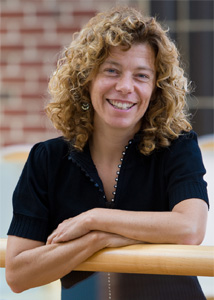Chapel Hill Centre
| Phase One | Phase Two | Phase Three | |||
| Centre: | Chapel Hill, USA ( North America ) | ||||
| Principal Investigator: | Dr Karin Yeatts | ||||
| Age Groups: | 13-14 | Timeframe: | November 1999 to June 2000 | ||
| Sampling Frame: | 13-14yr: All public middle schools in the state of North Carolina. | ||||
Personnel
Dr Stan Music
North Carolina Department of Health and Human Services
Chapel Hill, North Carolina
Usa
Roles:
- Phase Three collaborator for Chapel Hill
Mr Vic Rhodes
Department of Epidemiology
Chapel Hill, North Carolina
Usa
Roles:
- Phase Three collaborator for Chapel Hill
Dr Carl Shy
University of North Carolina at Chapel Hill
Chapel Hill, North Carolina
Usa
Roles:
- Phase Three collaborator for Chapel Hill
Dr Karin Yeatts

Research Assistant Professor
Department of Epidemiology, Gillings School of Global Public Health
University of North Carolina at Chapel Hill
Chapel Hill, North Carolina
Usa
Roles:
- Phase Three Principal Investigator for Chapel Hill
ISAAC Phase III in the US
I started working with the ISAAC survey for my doctoral research in 1994. Dr. Carl Shy, former Chair of the Department of Epidemiology at the University of North Carolina at Chapel Hill had recently obtained funding to implement the survey in approximately twelve Charlotte-Mecklenburg middle schools. Once that research was complete, Dr. Shy and I began collaborating with Dr. Stan Music at the North Carolina Department of Health and Human Services (NC DHHS) (the state health department.) State interest grew in our pilot data. We also collected data on asthma-related “health consequences” and health care utilization. Subsequently, we were funded by NC DHHS to conduct asthma surveillance across the state of North Carolina in all public middle schools (approximately 192,000 students) in 1999-2000. North Carolina had approximately 7 million people at the time. We used the basic ISAAC questions with additional questions as our survey instrument. We had 499 schools participated and we obtained good quality data from approximately 125,000 students. To thank the schools for participating, we created individual “asthma reports” for each of the participating 499 schools. In these reports, we included the local asthma and wheezing prevalence, the average surrounding county prevalence, and the state asthma prevalence as well as the health consequences (such as school absences due to asthma.) These reports were used by local community’s members, school administrations, and the state health department for both planning and public education on the health consequences of childhood asthma.
